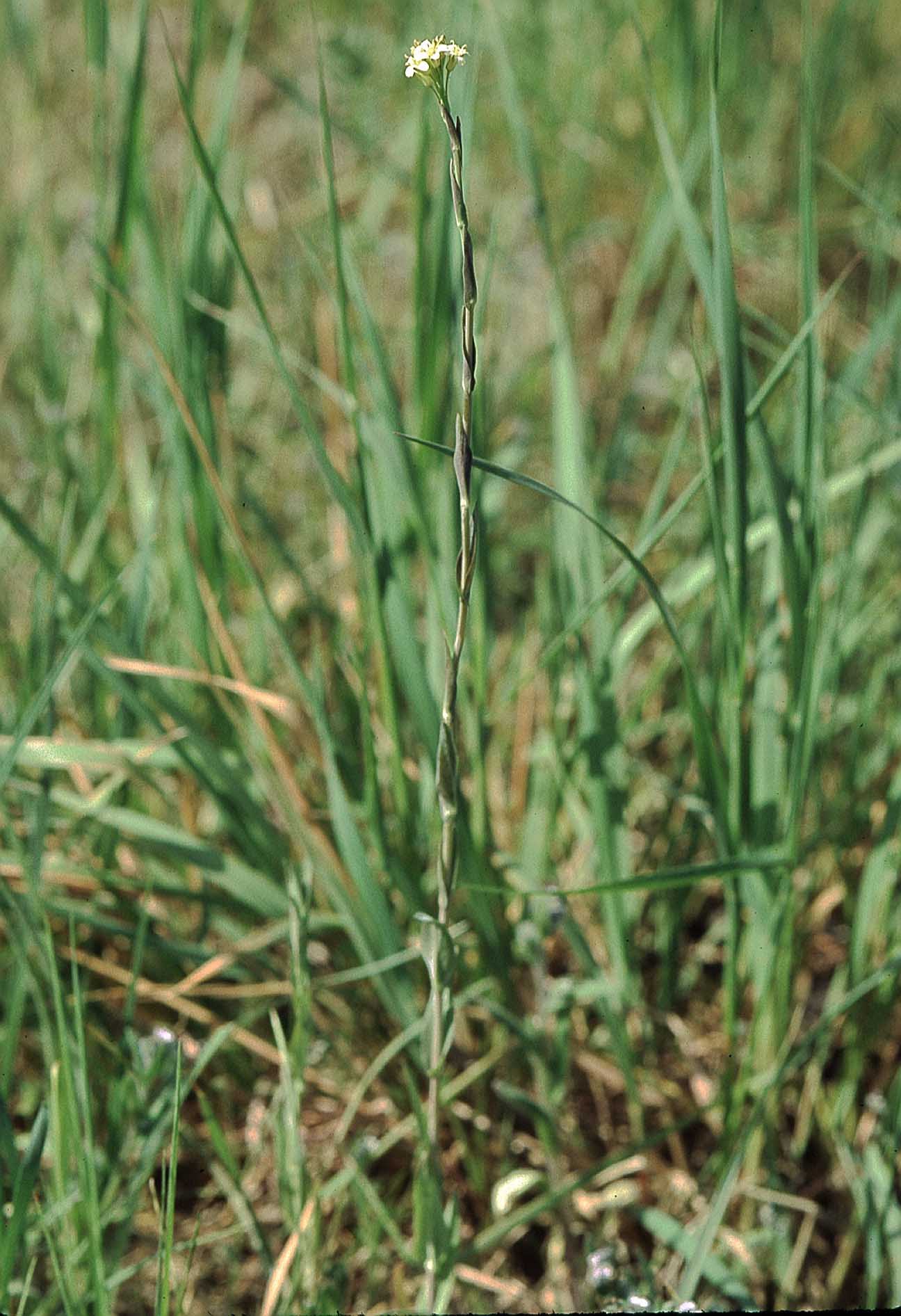Exploring Winged Rockcress
Scientifically recognized as Arabis glabra and classified under Brassicaceae, stands out as a distinctive Perennial herb known for its unique characteristics. While it may also be found under other Synonyms, Arabis hirsuta, Arabis verna.withNot applicable form. You can use our free plant care app PlantPlants to identify Winged Rockcress.
Temperature
15 F to 100 F (-9 C to 38 C)
Watering
Moderate, well-drained
Fertilizing
Slow-release fertilizer
Sunlight
Full sun to partial shade
Toxicity
Generally considered non-toxic



Appearance and Growth Of Winged Rockcress
At maturity, this species reaches approximately 15-40 cm (6-16 inches) tall, presenting Basal rosette of leaves, alternate leaves are lanceolate and can be hairy along with Small, white to pale pink flowers, clustered in racemes, followed by Silique-type fruits, elongated and slender. These features are supported by a reliable Fibrous root system, ensuring stability and sustained growth.
Winged Rockcress Origin and Habitat
Native to Native to North America, Winged Rockcress thrives in Rocky slopes, open woods, and disturbed areas at elevations around Typically found from low to mid-elevation areas (up to 3000 meters). Best suited for USDA Hardiness Zone 3-8. Whether grown indoor, in a curated garden or a more natural setting, its ecological requirements help maintain its vigor over time.



How to take Care of Winged Rockcress
Light, Soil and Watering Winged Rockcress.
You can use our free plant identify app PlantPlants to chose the best spot for Winged Rockcress, This plant prefers Full sun to partial shade and flourishes in Well-drained sandy or loamy soil with a soil pH of about 6.0-7.5.
Winged Rockcress needs watering,Moderate, well-drained, guided by PlantPlants app, You can get plants daily watering schedule. to maintain Drought-tolerant once established, ensure steady hydration. Applying water through Water at the base to avoid wetting the foliage supports even distribution and helps prevent overwatering or dryness.
Temperature and Humidity
Winged Rockcress performs best within -30 F to 100 F (-34 C to 38 C). Its ideal growth occurs at around 60 F to 75 F (15 C to 24 C), though it tolerates ranges from 15 F to 100 F (-9 C to 38 C). Additionally, maintaining Moderate, tolerates low humidity encourages healthy foliage and overall plant vigor.
Fertilization & Soil Health
Feeding with Slow-release fertilizer at the recommended Seasonal Application Frequency on PlantPlants App keeps nutrients balanced. Incorporating Compost or well-rotted manure enhances soil structure and fertility, while staying alert to Yellowing leaves, stunted growth helps you adjust care as needed to maintain optimal plant health.
Routine and Maintenance
Regular attention ensures this plant’s beauty and longevity. Early spring or after flowering for Deadheading spent flowers and removing dead leaves tidies its appearance, while Not typically repotted as it is a garden plant may be necessary as it grows, requiring a Not applicable increase and a fresh Well-draining mix with organic matter. for Staking or Support. None required.
Seasonal Changes and Propagation of Winged Rockcress
During Winter dormancy, growth may slow and some Evergreen leaves may turn yellow in winter can occur. For those looking to propagate, consider Seed propagation, division and provide Cold stratification may improve germination rates when starting from seed. If using cuttings, follow Not commonly propagated through cuttings to ensure successful rooting and healthy new plants.
Pests, Diseases and Prevention
our free plant identify and care app PlantPlants can help you diagnosisWinged Rockcress problems.Though generally robust, keep watch for Aphids, flea beetles and remain vigilant against Downy mildew, powdery mildew. Implementing Regular monitoring and using insecticidal soap and applying Neem oil for pest control, remove infected plants when issues arise will help sustain the plant thriving.
Companions and Uses of Winged Rockcress
This plant pairs nicely with Rock garden plants, herbs and shows None significantly noted, making it a flexible choice for various Ground cover, rock gardens, and borders.
Edible and Cultural Aspects
the Edible Parts: Young leaves and flowers. Toxicty of Winged Rockcress, Generally considered non-toxic. learning about its Spring, when leaves are young and tender, Can be used in salads or as a garnish, and Rich in vitamins A and C, and minerals can be intriguing for culinary explorers. Some traditions highlight its Traditionally used in some herbal remedies or note its Often found in traditional gardens and natural landscapes.
Conservation and Status
With an Not evaluated, proper Habitat preservation, sustainable gardening practices
Frequently Asked Questions
1. Is Winged Rockcress drought-tolerant?
Yes, it is drought-tolerant once established.
2. How often should I water Winged Rockcress?
Water every 7-10 days in summer; less frequently in winter.
3. Can Winged Rockcress grow in shade?
It prefers full sun but can tolerate partial shade.
4. Is Winged Rockcress edible?
Yes, young leaves and flowers are edible.
5. When do flowers bloom?
Flowers typically bloom in spring.
6. What soil type is best?
Well-drained sandy or loamy soil is ideal.
7. Does it need fertilizing?
It benefits from a slow-release fertilizer applied twice a year.
8. Are there common pests?
Yes, common pests include aphids and flea beetles.
9. How do I propagate Winged Rockcress?
It can be propagated by seed or division.
10. Does it require staking?
No, it does not require staking or support.


